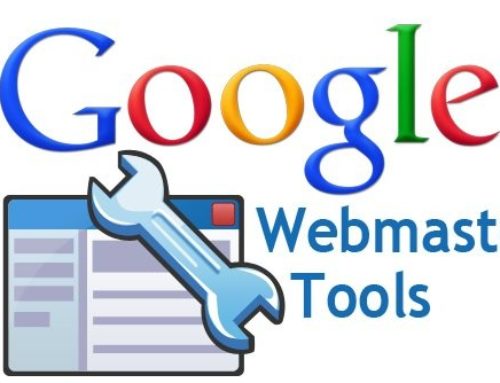The Digital Evolution
The way businesses operate has fundamentally transformed over the last decade, with technology taking centre stage. Whether you’re a startup, an SME, or an established corporate giant, the pace of technological change demands a proactive, adaptable approach. In this article, we’ll explore why embracing technology is no longer an option but a necessity—and how to do so strategically while staying human.
Understanding the Current Landscape
Gone are the days when having a basic website and email address set you apart. Today, success hinges on a digital-first mindset. According to recent studies, businesses that adopt digital technologies report higher revenues, greater customer satisfaction, and increased operational efficiency. Yet, a surprising number of organisations still lag behind.
Why? The reasons vary, from budget constraints and a lack of expertise to simple resistance to change. But in the digital era, stagnation is the enemy of success. Your competitors are using tools that automate their processes, personalise customer interactions, and provide real-time insights into market trends. If you’re not keeping pace, you’re falling behind.
The Pillars of a Digital-Ready Business
Every business is unique, but the path to digital success often revolves around a few critical pillars:
- Cloud Technology Cloud computing has revolutionised the way businesses store, access, and share data. It’s scalable, cost-effective, and secure. Tools like Microsoft Azure, Amazon Web Services (AWS), and Google Cloud allow businesses to operate seamlessly, even with distributed teams.
Imagine a construction company using cloud software to track project milestones, share real-time updates with clients, and store compliance documents securely. It’s not just about convenience; it’s about staying competitive in a fast-paced market.
- Automation Automation isn’t about replacing jobs; it’s about enabling your team to focus on high-value tasks. From automating marketing campaigns to streamlining supply chain logistics, the possibilities are endless.
Consider a retail business that uses automated inventory management systems. Instead of manually tracking stock levels, staff can focus on enhancing the customer experience—something that can’t (yet) be automated.
- Cybersecurity Cyber threats are more prevalent than ever, and the cost of a breach can be devastating—financially and reputationally. Investing in robust cybersecurity measures isn’t optional; it’s critical.
A quirky takeaway: Think of cybersecurity like brushing your teeth. It’s not glamorous, but neglecting it leads to costly problems down the line. And just like you wouldn’t trust toothpaste from a questionable source, you shouldn’t cut corners with cheap security solutions.
- Data Analytics Data is the new oil, but raw data is useless without the right tools to refine it. Analytics platforms like Tableau, Power BI, or even Google Analytics can turn numbers into actionable insights.
Imagine a bakery chain tracking customer preferences. By analysing data, they might discover that vegan options sell better on weekdays, leading to targeted promotions that boost sales.
- Human-Centric Tech Adoption This might sound counterintuitive, but technology is only as good as the humans using it. Investing in training and upskilling your team ensures they can leverage new tools effectively. Remember, it’s not about tech for tech’s sake—it’s about empowering people to achieve more.
Overcoming Common Barriers
While the benefits of digital transformation are clear, getting there is easier said than done. Here are some common barriers and how to address them:
- Budget Constraints: Start small. Instead of overhauling everything, identify one or two key areas where technology can have the most immediate impact.
- Change Resistance: Involve your team from the start. People are more likely to embrace change if they feel included in the process.
- Lack of Expertise: Partner with external consultants or agencies if needed. Sometimes, a fresh perspective can unlock new possibilities.
The Quirks of Modern Business Technology
Let’s lighten the mood with some quirky observations:
- AI Assistants: They’re helpful, sure, but ever noticed how they always misinterpret the simplest commands? (“Alexa, play calming music,” turns into “Here’s a techno playlist.”)
- Passwords: Why do the most secure ones feel impossible to remember? “$1a2B3c4D!” is great for security but terrible for sanity.
- Pop-Up Updates: Software updates always seem to appear at the worst time, like just before a critical client presentation. (Tip: Schedule updates outside of work hours.)
Practical Steps to Get Started
Feeling inspired but unsure where to begin? Here’s a roadmap:
- Audit Your Current Systems: What’s working? What’s not? Identify gaps and opportunities.
- Set Clear Goals: Are you looking to improve customer service? Streamline operations? Reduce costs? Defining your objectives will guide your tech choices.
- Prioritise Security: As mentioned earlier, cybersecurity is foundational. Ensure you have a solid plan in place before rolling out new systems.
- Involve Your Team: Technology is a tool, not a replacement. Make sure your team understands the “why” behind your decisions and how it benefits them.
- Measure and Adapt: Digital transformation isn’t a one-and-done deal. Regularly review your progress and adapt as needed.
Embracing technology is about more than keeping up with trends; it’s about future-proofing your business. By leveraging the right tools and fostering a culture of adaptability, you can position yourself for sustained success in an ever-changing landscape.
Whether you’re a tech-savvy entrepreneur or a business owner dipping your toes into the digital world, the key is to start. As the saying goes, the best time to plant a tree was 20 years ago; the second-best time is now.
So, what’s your next step in your digital journey? Let’s embrace the future together.




